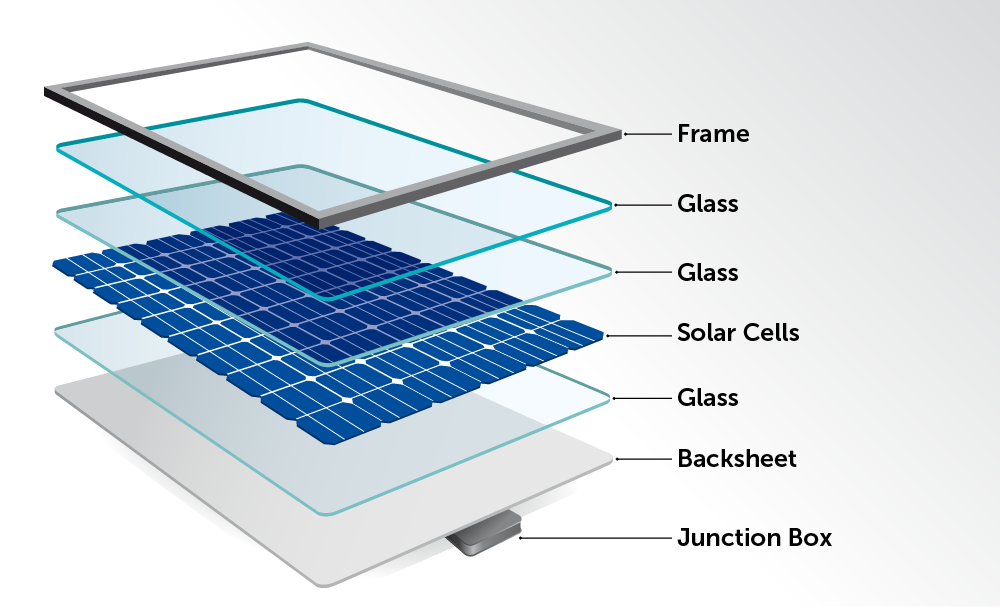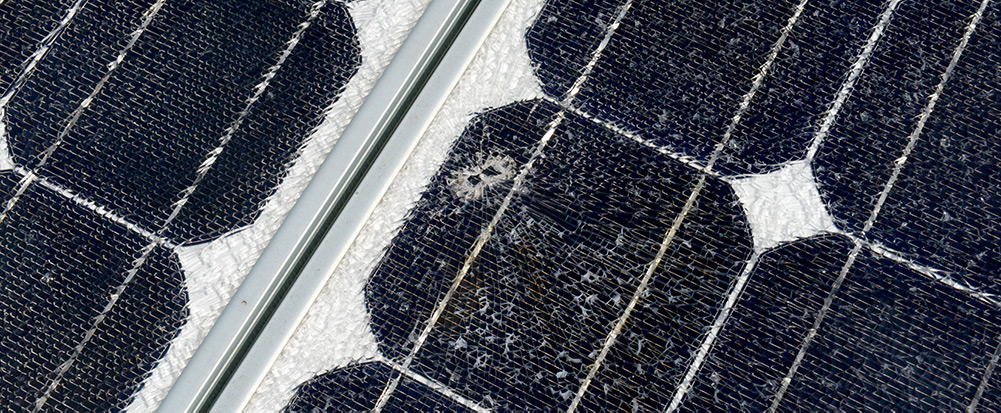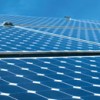Bright Light, Big Future: Solar Power on the Rise
Looking at the solar industry in the 2020s
The sun is shining on solar in the 2020s. Despite the supply chain disruptions in the underlying components caused by the Covid-19 pandemic, it represents the second-largest absolute generation growth of all renewable technologies, slightly behind wind and ahead of hydropower. According to BP, the global growth rate of solar production in 2019 was 24.3%, with the rate rising to 33.2% in non-OECD countries. Many studies indicate that this growth rate will continue, thanks to government policies, falling costs, and rising demand have all driven considerable growth rates around the world.
Rising energy demand coupled with the growing population and raising the non-conventional price of energy is expected to drive the market in the upcoming years. Government initiatives for the use of renewable energy, low maintenance and operating cost of the solar power project, and rapid industrialization in the developing countries are bolstering the global market for solar energy.
While government programs – both incentives and communication – have been main factors for the growth of the solar energy market are government incentives provision & tax rebates for the installation of solar panels and awareness of environmental pollution. Increased rooftop installations for residential use are expected to a boom in the market during the forthcoming years. Furthermore, the rising demand for solar power towers in electricity generation is projected to generate more demand for concentrated solar power systems.
Rising energy demand coupled with the growing population and raising the non-conventional price of energy is expected to drive the market in the upcoming years. However, climatic conditions especially in the geographical region, such as snowfall, rainfall, and high initial installation cost may restrain the growth of the solar energy market. Conversely, government initiatives for the use of renewable energy, low maintenance and operating cost of the solar power project, and rapid industrialization in the developing countries are bolstering the global market for solar energy.
United States government previously stated plans to cut the cost of electricity generation by 50% by 2030. The current administration announced that 100% of energy production in the US will be carbon-free by 2035. Many states in the country such as California, New Jersey, and others have their solar energy targets for 2030, which are expected to create several opportunities for the United States solar energy market in the future.
While policies and climate events have increased interest in solar power, it’s the dramatic fall in price that has enabled this dramatic growth.
According to International Energy Agency’s World Energy Outlook 2020, no other power-generation technology matched solar’s pace this past decade, resulting in the “cheapest…electricity in history” with the technology cheaper than coal and gas in most major countries.
With governments, private industry, and consumers all seeking energy sources that are greener but still affordable, solar cell manufacturers are under pressure to increase the quality of their products and reduce costs. Improvements to solar panel manufacturing over the last decade have been a key driver of this downward cost trend. Scaling up production while integrating new technologies demands more automation and quality control, as yield is critical.
Complex Assembly
This success can cause difficulties, Simultaneously, as technologies are more established, and demand is climbing quickly, expected volumes are up, and margins are down. As we’ve seen in other industries, this makes the efficacy of the production line absolutely important. Exacerbated by workforce limitations under COVID-19, many manufacturers are investing in more automation technologies: robotics for assembly and advanced imaging for inspection.
Automation and inspection are both critical to high-quality, consistent, and high-throughput solar panel manufacturing. There are delicate components and multiple layers, all requiring precise placement and alignment. Material handling, cell cutting, and component bonding are all very automated in modern factories, but an error in any one of them risks lower initial performance, and shorter operational life for each solar panel.
This makes inspection crucial. End-of-line testing of electrical parameters like current voltage and peak power rating ensure that panels perform at expected standards. Imaging allows us to look for quality issues, such as cracks and misalignments that indicate initial quality, but also longevity of the panel itself in the field.
Like many areas of electronics manufacturing, leading manufacturers have already moved to 100% inspection and the rest of the industry is working to catch up. Optical inspection becomes required at after every major processing step.

A Single Crack Can Tell the Future
Chasing efficiency, modern silicon solar cells are getting thinner, in some cases approaching 100 microns. Thinner and cheaper also means more fragile. Each stage of production creates an opportunity for tiny cracks to appear. For example, after soldering the copper in connecting wires will contract, pulling away from the silicon boards they’re connecting, causing small cracks. Cracks can also occur at the crystal growth stage, or during cutting.
Any imperfection in solar cells, such as cracks, poorly soldered joints, and mismatches, lead to higher resistance and become hot spots in the long run. The long term effects of hot spots include burnt marks that degrade solar cells and back sheets and may eventually lead to fires if left unchecked.
Imperfections in the glass layer can makes cells more susceptible to breakage. Whole production lines get stopped by contamination from shards from broken wafers or glass. Once installed, the front glass panel of a solar panel provides the first line of defense against the elements: storms, dirt, and even a stray baseball. If the glass is broken, the panel will absorb and convert less light, and such as water and dust can get into the panel to cause more problems undermining the integrity of the entire panel.
These imperfections can foretell problems for the whole system later. Further mechanical stress from transport, installation, or weather can cause these initial issues to propagate. So it’s important to identify and remove damaged or imperfect parts from the production process to prevent faulty products. How do we do that?

Factory Floor Realities
In 2021, machine vision is a key tool that manufacturers use to improve product quality and production efficiency while increasing the pace of product to meet demand. The challenge is detecting these tiny imperfections that are not yet problems, but will cause failures, yield reduction, and material damage down the road.
CCD- and CMOS-based cameras have been long used to for microcracks on the assembly line. Even with cooled sensors, these system can require long integration times in very dark conditions, slowing down the production line and introducing additional complexity. The latest high resolution, high speed linescan and TDI cameras now find extensive use in solar panel manufacturing.
Indium gallium arsenide (InGaAs) detectors are sensitive to NIR/SWIR wavelengths where the silicon substrate (by far the most common) becomes transparent, reducing light scattering is reduced. Manufacturers will typically apply voltage to the cells to make imaging easier: silicon and other photovoltaic cell materials will emit light that the IR sensors can reliably see, even at video rates. This helps manufacturers spot flaws in the top layers – from the optical layers down to the photodiode junctions in the cells.

For example, IR imaging can detect temperature differences between parts of the module or between modules. Broken junctions cause inactive areas – and because they are not converting energy to DC power as designed, they produce more heat, slightly raising the temperature of that specific area enough for a camera to see. These are the kinds of defects that could lead to hotspots, decreased performance, and even fires years later.
This kind of scanning can also help identify cells that meet certain efficiency levels, allowing them to be matched with similar cells. This ensures that single cells are not holding back the power output of the whole module or panel.
No matter the type of imaging used in inspection, system performance is an important determinator of the success of the system – in terms of both speed and accuracy. Higher pixel counts, better contrast, dynamic range, lower noise, quantum efficiency, higher speeds, and precise system installation translate directly into better quality control and feedback on the manufacturer line.
Future Developments
There remain many directions that future developments can go. Cost and reliability will certainly lead among concerns. Both factors can go hand-in-hand, which is why the US government is funding in research to more double the expected lifespan of solar panels, which currently sits around 25 years.
New materials offer opportunities, as well. Today almost 90% of solar panel cells are made from crystalline silicon, but that might be changing soon. Organic photovoltaics panels are particularly promising – the base materials are abundant, and chemical synthesis is simpler. They are also much lighter, opening up new possibilities for placement. They could even be printed! While they have yet to meet the performance levels of tried-and-true technologies, it seems that they could represent the future of solar panels. Compared to crystalline silicon solar module, which has an emission spectra peak at 1150nm, organic cells peak at slightly longer SWIR wavelengths (1200nm – 1400nm).
Climate change will continue to drive and shape solar demand in surprising ways. In Australia, aging fossil-fuel infrastructure has helped retail electricity prices to nearly double since 2005. In California, rolling blackouts to prevent forest fires affect most of the state in the summers. In Texas and Puerto Rico, extreme weather events damaged infrastructure and called into question the reliability of the whole electrical grid. In response to all of these events, both companies and individuals have driven a surge of interest in solar-driven systems that can fill the gaps created.
As old problems are solved, new ones arise. The result is a dynamic industry with enormous long-term potential. While it might be said for almost any industry, it is more true for solar power: it could make the world a better place.



 Solar Cell Manufacturing meet Goals
Solar Cell Manufacturing meet Goals  Infrared imaging applications: See the heat, feel the light
Infrared imaging applications: See the heat, feel the light 